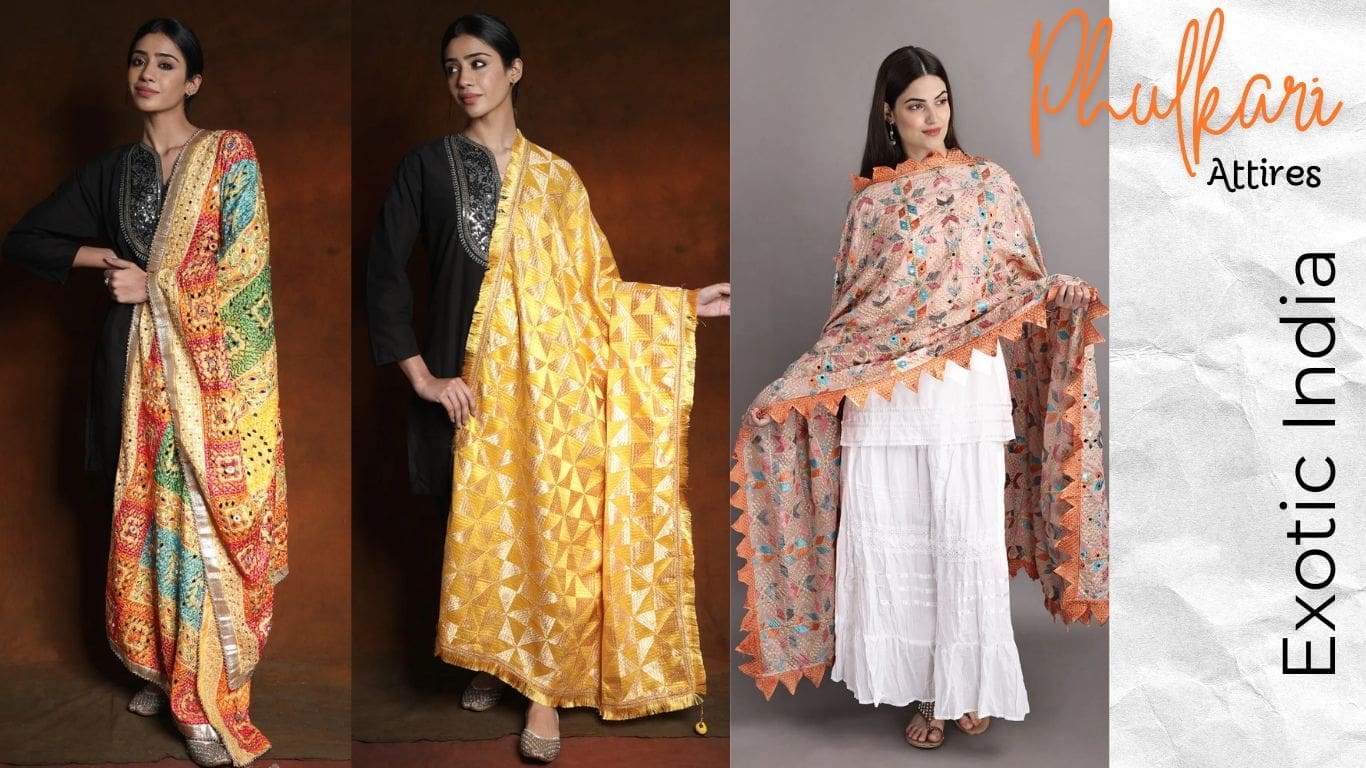Once an obscure art, Phulkari embroidery has recently gained widespread recognition, captivating audiences across India. This vibrant textile tradition, originating from the state of Punjab, has transcended regional boundaries, enchanting fashion enthusiasts and art connoisseurs alike.
The Floral Tapestry of Phulkari
The term “Phulkari” in Punjabi translates to “flowering,” aptly describing the intricate floral patterns that adorn these exquisite textiles. Traditionally, Phulkari embroidery was practiced on shawls and sarees, with the designs often concentrated on the borders or adorned with delicate “booties” (small motifs). The true masterpieces, known as “Bagh,” feature a seamless tapestry of flowers covering the entire fabric, creating a mesmerizing garden-like effect.
The Vibrant Palette of Phulkari
Phulkari embroidery is renowned for its vibrant color palette, with hues like crimson, orange, golden, and various shades of green taking center stage. These rich, bold tones were often sourced from diverse regions, including Kashmir, Bengal, Afghanistan, and China, showcasing the art’s far-reaching influences.
The Artistry of Phulkari
The intricate Phulkari embroidery is a testament to the skilled hands of Punjabi women. Sitting on makeshift beds, often in the shade of trees or walls, these artisans would meticulously stitch each design using a single thread, creating a captivating interplay of horizontal and vertical stitches that dazzle under the light.
The Evolution of Phulkari
Phulkari, initially created for personal use and as part of wedding trousseaus, has evolved to meet the demands of modern-day fashion. While the traditional Phulkari remains a cherished heirloom, a new wave of Phulkari has emerged, incorporating synthetic threads and a wider color palette to cater to contemporary tastes. This adaptation ensures the continued relevance and preservation of this timeless Punjabi art form.
Embracing the Phulkari Diversity
Phulkari designs are as diverse as the regions they hail from, with each village and community boasting its own unique motifs and patterns. From the intricate “Dhup Chaon” (light and shade) to the iconic “Dhaniya Bagh” (Coriander Garden) and “Motibagh” (Jasmine Garden), the Phulkari repertoire is a rich tapestry of cultural heritage.
Phulkari: A Celebration of Life
Phulkari embroidery has long been woven into the fabric of Punjabi life, adorning auspicious occasions and serving as a symbol of marriage and fertility. From the “Bagh” worn by new mothers to the Phulkari covers for the Sikh holy book, Guru Granth Saheb, this art form is deeply rooted in the region’s cultural traditions.
Embracing the Modern Phulkari
As Phulkari evolves to meet contemporary fashion trends, it has found new avenues of expression. From Phulkari jackets to sarees and salwar kameez, this timeless embroidery seamlessly blends with modern silhouettes, captivating a new generation of admirers. By adapting to the changing times, Phulkari ensures its continued relevance and preservation.

